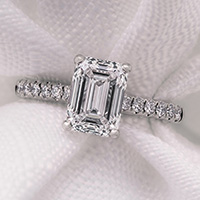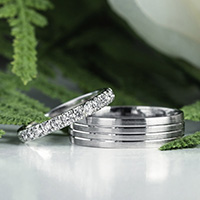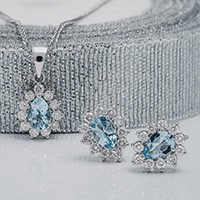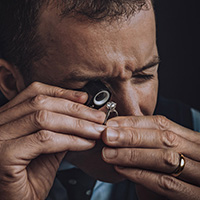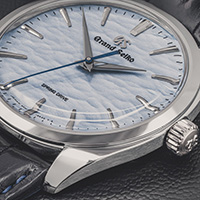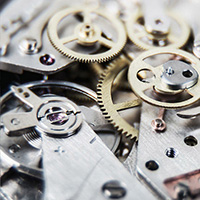The History of Spring Drive and How It Works
Grand Seiko has a handful of significant accolades to their name. Before becoming a stand-alone brand in 2017, Grand Seiko operated under the umbrella of Seiko. Both watchmakers have influenced the watch industry in such a way that many Swiss watchmakers could only dream of. Icons of design and technical watchmaking, Grand Seiko has been innovating and challenging the status quo since 1960. Spring Drive is one such technology that not just symbolises this but is successful in its ambitions. If you’ve ever popped into James Porter & Son or browsed Grand Seiko’s offerings before, you probably have seen those two words on the dial of certain watches. But what do they actually mean? Do these two seemingly generic words actually amount to any tangible benefit to the wearer?
Well, let’s take a look and explore Spring Drive in a little more detail.
How watches actually work
Before we begin explaining what, where, when and why with Spring Drive, it’s worth ensuring we have our heads fully wrapped around the concept of conventional mechanical movements and what makes them tick. Don’t worry, we’ll keep it brief.
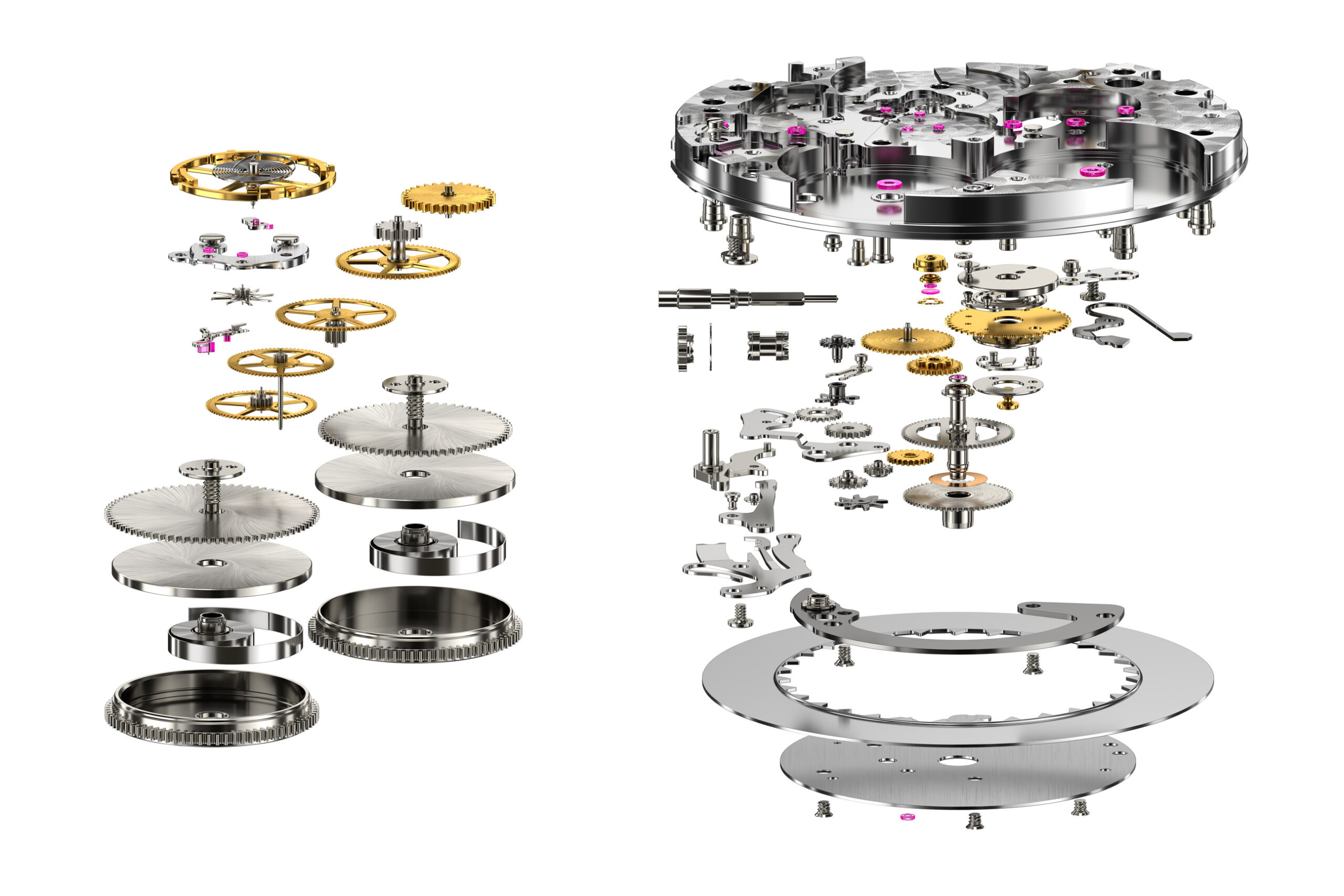
Exploded view of the Grand Seiko calibre 9SA5
All mechanical movements require a power source which is often either a rotor that spins as you wear the watch or through a more direct interaction by manually winding the crown. Once power is generated, it is stored via a coiled up mainspring within a barrel. Over time the mainspring gradually releases its stored energy via the barrel, which transfers it to the wheels of the watch and such, ensuring timekeeping can be measured. However, this power needs a level of control, a brain if you will: in steps an escapement. Once the power generated has made its way through to the escapement wheel, the escapement itself ensures it is controlled with pallets in place to lock and unlock the wheel. A balance wheel that is oscillating regulates the watch. Without this, the watch would burn through its power quickly and completely inaccurately. These precisely engineered moving parts ensure that mechanical watches can effectively display the passage of time through the dial.
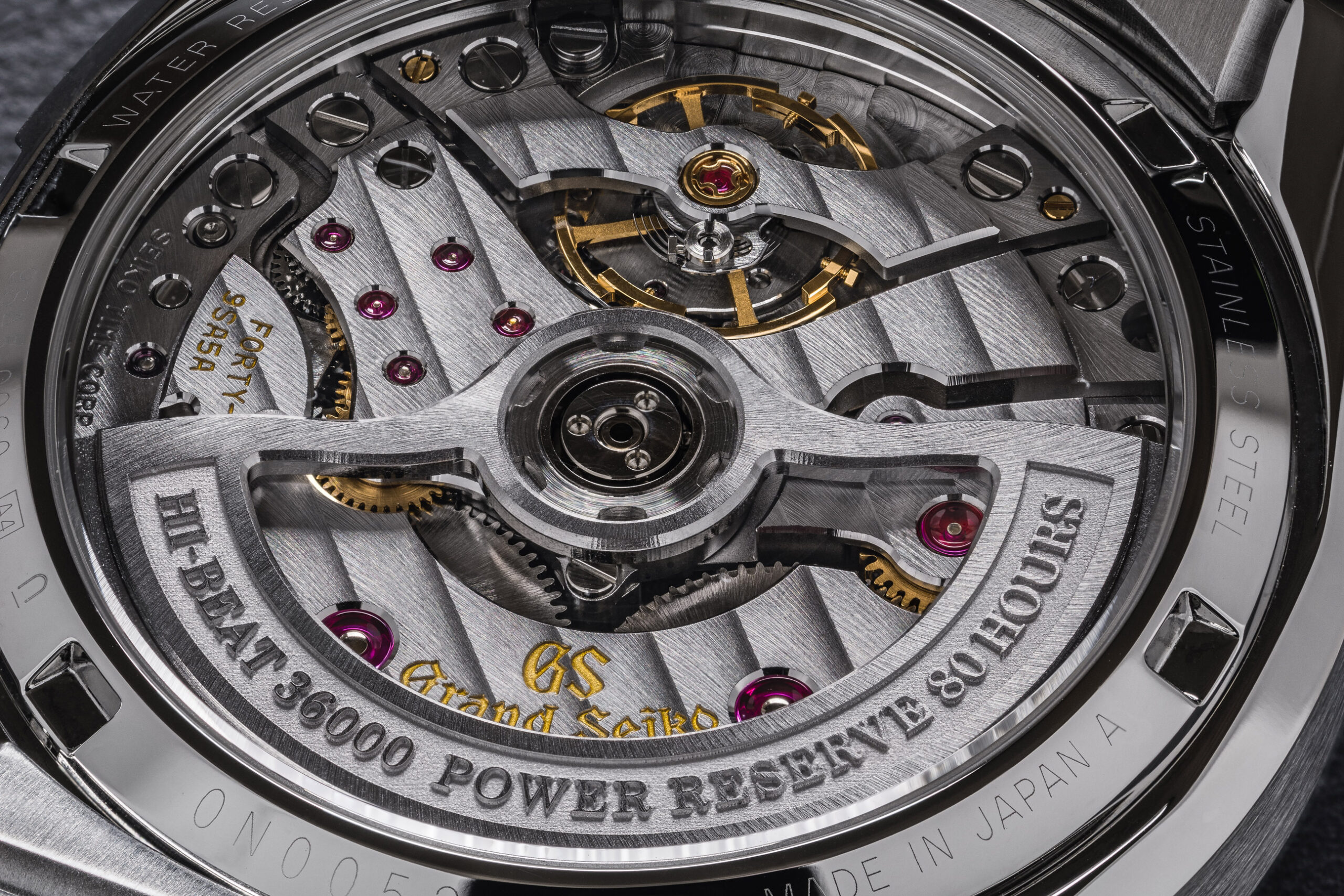
The Hi-Beat calibre 9SA5 found in the Grand Seiko 'White Birch' SLGH005
A quartz watch is in some ways similar. There is a generation of power through a source (this time a battery) which is transferred through a quartz tuning fork that vibrates 32,768 times a second and subsequently serves as an oscillator. A circuit then counts the vibrations and creates regular electrical pulses at a rate of one per second (this is why a quartz seconds hand ticks once per second). This then can move a set of watch hands incredibly reliably and accurately.
What is Spring Drive?
Now we’re aware of how watches typically tell the time, let’s tackle how Spring Drive approaches this. Spring Drive is a unique piece of watchmaking technology from Seiko that combines the longevity of a mechanical movement with the accuracy and reliability of a quartz. But what is truly going on with Spring Drive movements?

Spring Drive Mechanism and Tri-synchro Regulator
Things begin relatively run of the mill with a source of power being generated through motion (Be it a swinging rotor or the act of winding the crown) which is stored via a coiled up mainspring. This power is then distributed through gears which in turn is able to keep time (all seems pretty standard so far). Things get more electrical though when it comes to regulating Spring Drive movements as a glide wheel uses electromagnets to slow the energy from the mainspring free from friction. This wheel is a part of a Tri-synchro regulator that Grand Seiko uses in favour of a conventional escapement. Essentially, this is a slice of how a quartz movement works. The power generated by the mainspring runs through the glide wheel, which produces an electrical current that passes through a circuit and in turn, vibrates a tuning fork-shaped crystal with incredible accuracy. The energy then goes back through the circuit and glide wheel to sustain its speed at exactly eight revolutions per second. This then governs the movement of the hands and produces a completely smooth second hand.
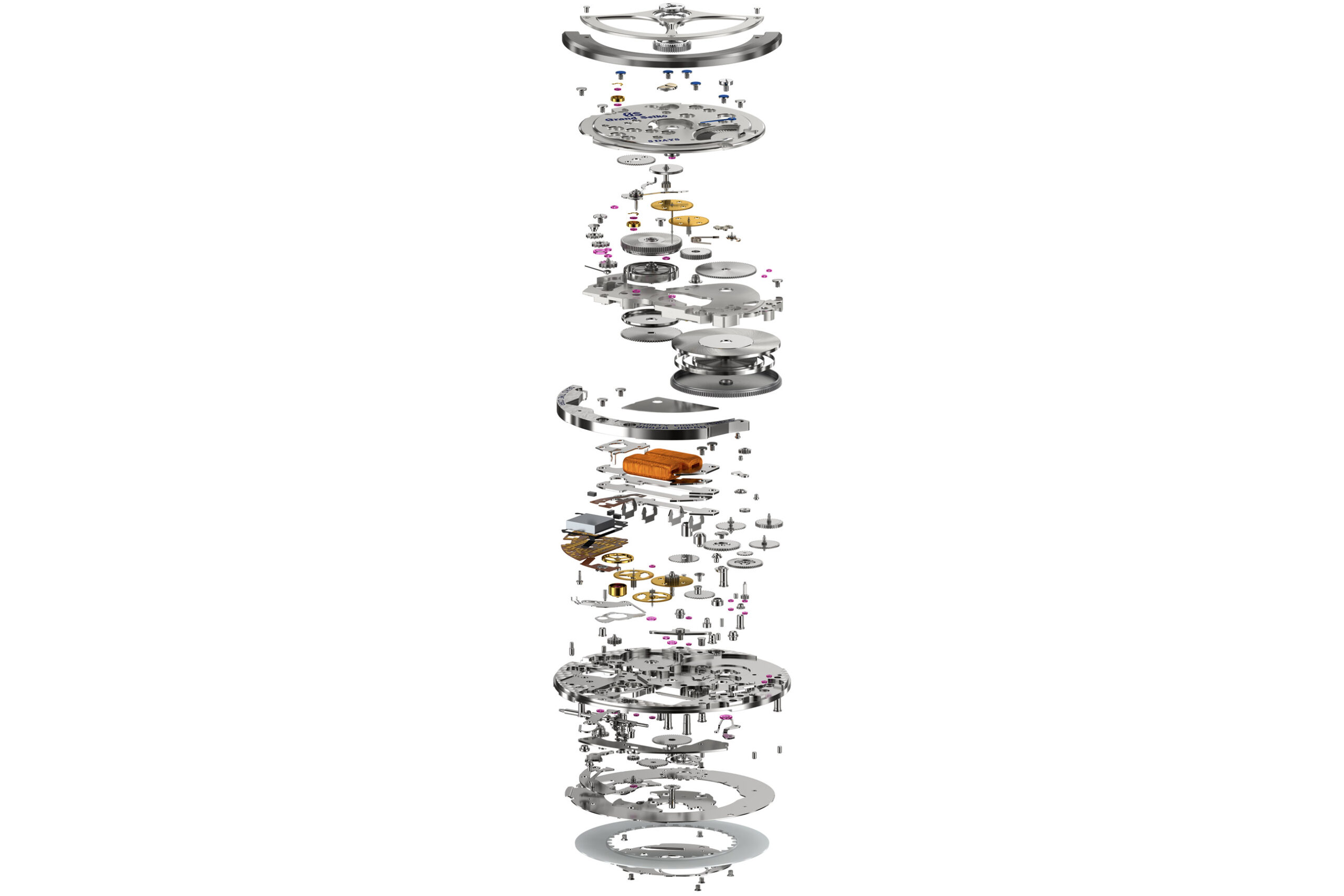
Exploded view of the Grand Seiko Spring Drive calibre 9RA2
In other words, Spring Drive addresses the most delicate and most important part of mechanical watchmaking by replacing it with the most technically impressive aspect of battery-powered watches without the need of a physical battery.
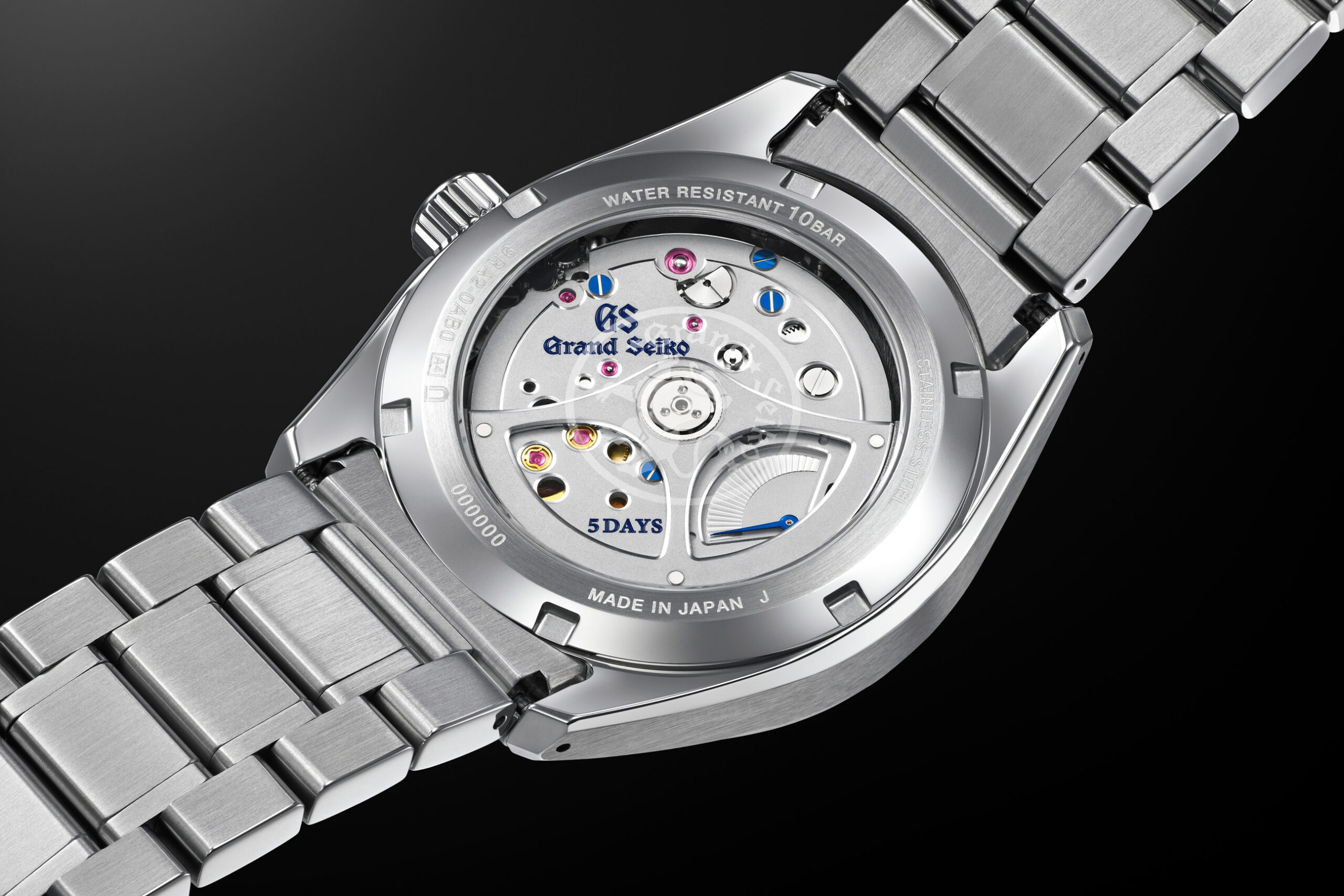
Grand Seiko Spring Driver calibre 9RA2 powering the 55th Anniversary 'Orbit' Limited Edition SLGA013
How Spring Drive came to be
In 1969 Seiko released the first quartz watch, bringing this innovative technology down to a miniature size. Costing the equivalent of $8,000 USD today, the 1969 Aston from Seiko kickstarted a shift in consumer preferences towards the more dependable, accurate and eventually more affordable technically advanced battery-powered watches. However, in 1978 a Seiko engineer called Yoshikazu Akahane began working on a hybrid like concept, something he referred to as an "everlasting watch."
As we’ve just discovered, Yoshikazu’s idea was to replace the escapement of a mechanical watch with an electronic regulation system that would increase the mechanical watch's accuracy. This concept took 20 years to develop, and in the late 1990's, the Spring Drive was debuted in the reference SBWA001 before being available on a greater scale in the early 2000s.
Why Spring Drive matters
Phew, now that all became very technical very quickly, didn’t it? So let’s take a break and ponder the big picture with Spring Drive. Although undoubtedly technically impressive, why should any of us care about Spring Drive? This is an intriguing question, with a pretty bulletproof answer.
You see, watchmakers have spent generations trying to perfect the mechanical movement. Increasing the accuracy and durability of timekeeping machines has been a seemingly endless quest. This art form was, in many eyes, lost with the advent of battery-powered watches. It was seen to take away the heart and soul of true watchmaking in place for an often cheap disposal cell. But Spring Drive is different. After all, it is still a mechanical movement that has simply agreed to work with modern technology rather than push against it.
Thanks to the Spring Drive, these movements have crucial benefits over a traditional mechanical movement, including:
- Being more accurate thanks to the continuous and reliable transmission of regular power. This results in Spring Drive movements achieving accuracy rates a month that rival the top Swiss mechanical watches daily rate. The efficiency of these creations is mighty impressive.
- As the Tri-synchro regulator replaces a traditional, delicate escapement, Spring Drive movements are a lot more durable. They are more shock resistant and less likely to be impacted by external forces such as magnets, offering increased reliability.
Essentially then, Spring Drive has solved the problems so many watchmakers have pondered over for decades. And the best part of it all? It does so on a commercial scale for a subjective low amount of coin. Other positives provided by Spring Drive is twofold. Firstly, it represents a development in the mechanical watch industry. In a world where more and more people are wearing watches that can read your texts or receive a call, the perpetual development of this ancient technology is crucial to ensure it stays relevant. Ensuring mechanical watches play a part in the modern world whilst remaining an attractive option for our technological focused generation is essential.
The other benefit is a little more direct and subject; come on, how good does a completely smooth seconds hand gracefully floating around the dial look?
The calibres
After initially being introduced in the Credor family of watches and a select few limited editions, Spring Drive technology was rolled out to the Grand Seiko range identified as 7R movements in the early 2000s. Since then there have been some very noteworthy advancements of this hybrid technology that have contributed to the elevation of the Grand Seiko name and perception within the industry. Here are a few key, most notable examples: The calibre 9R65 is what many regard as one of the first Spring Drive movements as it featured in the foremost widely available Grand Seiko. As such, this movement powers lots of different models still to this day. With a power reserve of 72 hours (that’s three days) and an accuracy of -15/+15 seconds a month, this automatic movement is the workhorse of the Spring Drive family. The 9R66 uses the same base as the 65, however, it adds a GMT complication.
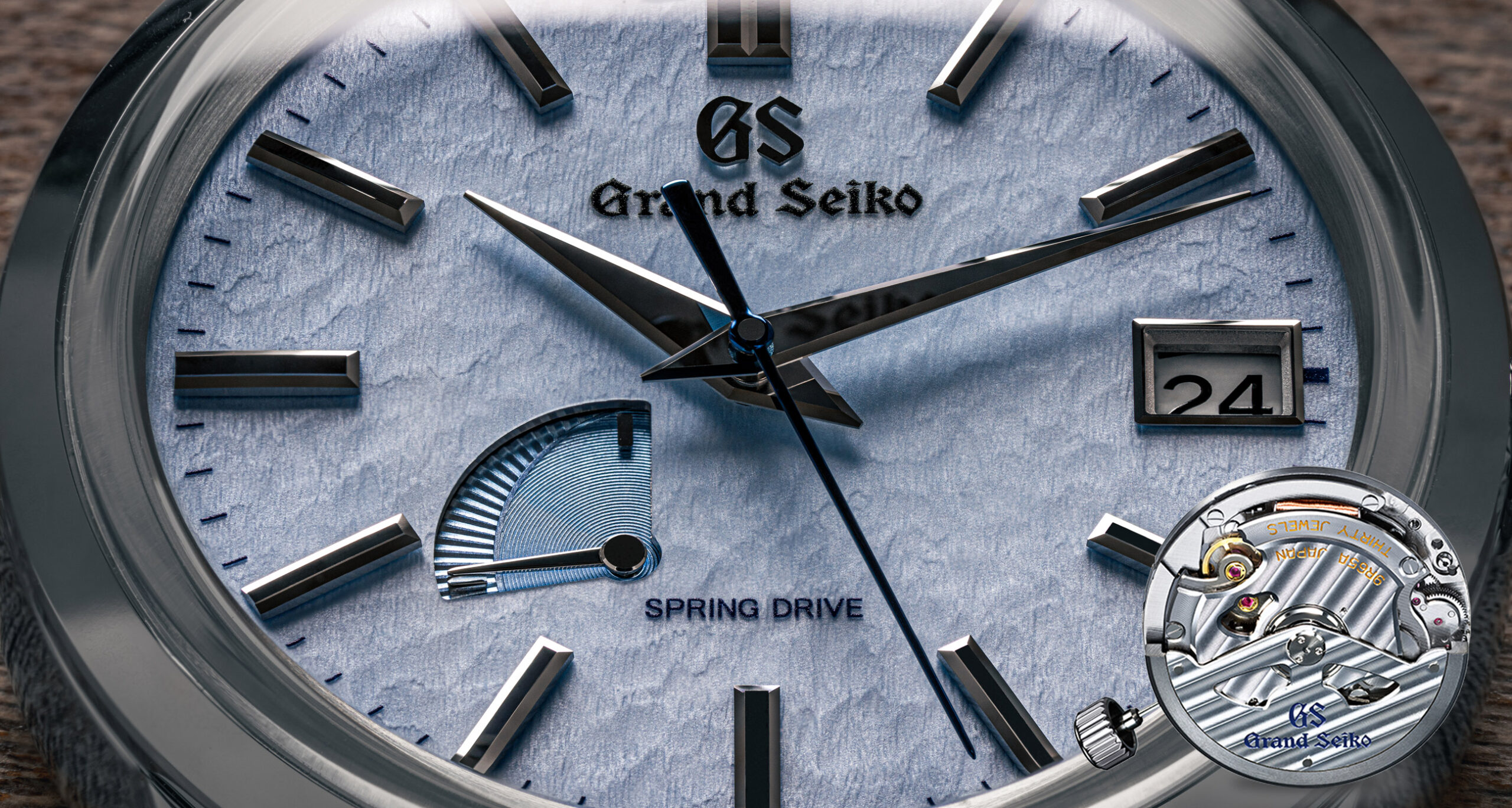
Grand Seiko 'Skyflake' SBGA407 with the Spring Drive calibre 9R65
A compelling evolution of Spring Drive calibres occurred in 2007 with the release of the 9R8 series. Calibre 9R86 introduced a chronograph and GMT complication and, despite this being a column-wheel chronograph, still manages to pull in 72 hours of running time.
Pushing the boundaries
It’s clear that Grand Seiko is not afraid to challenge themselves and go the extra mile. If Spring Drive as a whole wasn’t a good enough example of this for you, then check out the 9R01. This movement is the first to have been created by the Micro Artist Studio of Shio-Jiri in the mountains of central Japan. 72 hours of running time is fantastic and already a very noticeable upgrade on similarly priced standard movements used in the watch industry, but do you know what is better than 72? 192.
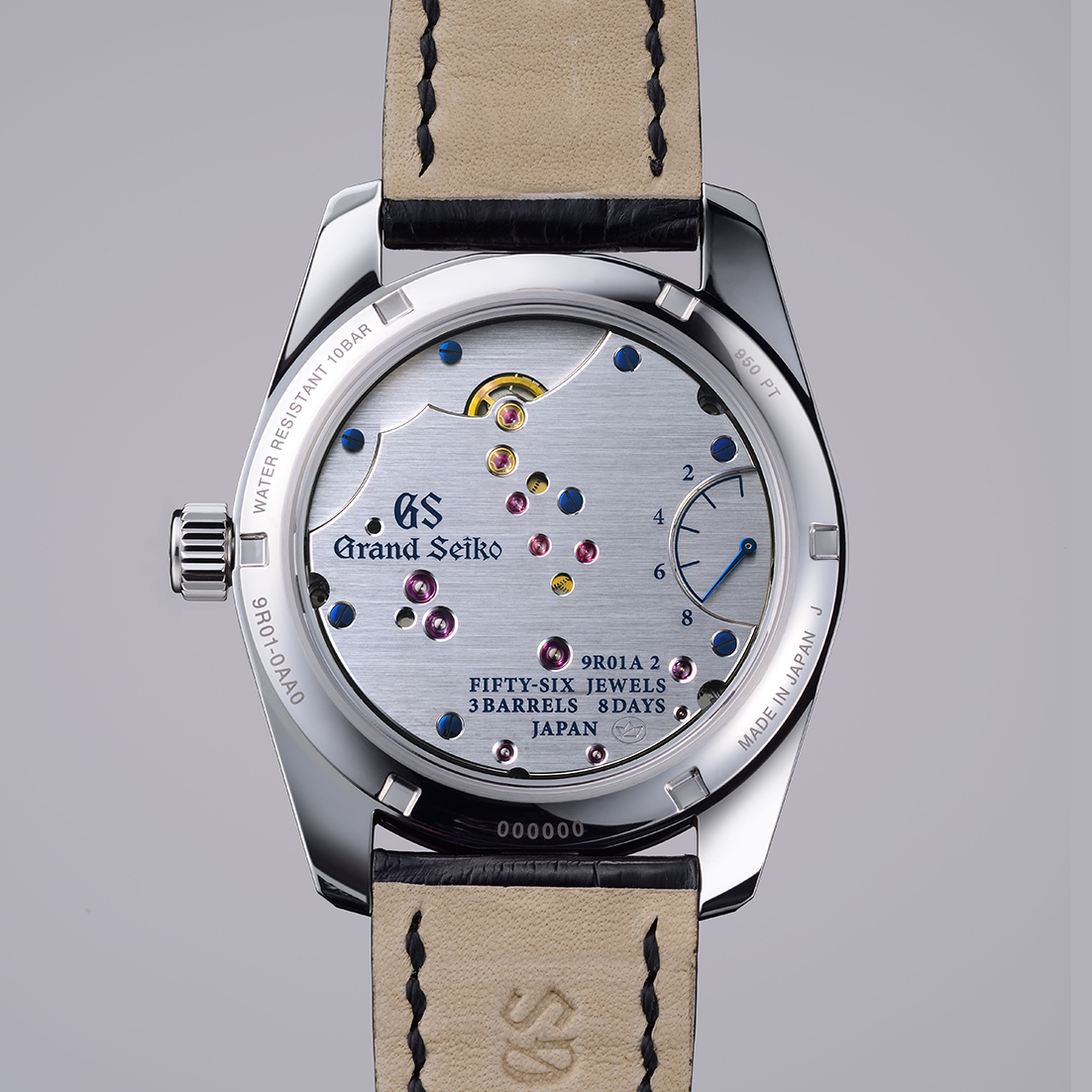
Spring Drive calibre 9R01 found inside the Grand Seiko SBGD201
Yup, the 9R01 delivers 192 hours of power which equates to eight days. This is made possible thanks to a series of three barrels linked together and a movement design based on reducing friction. Accuracy is now within +10 seconds a month and the watch also features a single-piece bridge to increase the durability further. As such, this movement is reserved for select Grand Seiko models made from precious metals and occasional gem-set pieces.
Similarly, the 9R15 also has 192 hours of running time and the same accuracy level. This movement is equivalent to +/-0.5 seconds for those interested in a daily accuracy reading, a truly staggering achievement.
The icing on the cake. The finishing.
Amongst their innovative hybrid Spring Drive movements, Grand Seiko is also well known for its elite level of finishing. And when we say elite, we truly mean it. Grand Seiko finishing is often (and deservedly) compared to the best Switzerland and Germany can offer; in many cases bettering them. Finishing such as Zaratsu polishing can be found on their cases and bracelets with equally impressive finishing on the dials and also on, you guessed it, their Spring Drive movements, like the 7R14 pictured above, which is found inside Credor's Eichi II. Combined with unique, almost Geneva like striping to their rotors and bridges, you can find beautifully shaped and polished interior angles and bevels which have been crafted using gentian wood, exposed jewels and thermally blued screws. These movements are not only mechanically sound but are also simply magnificent to behold.
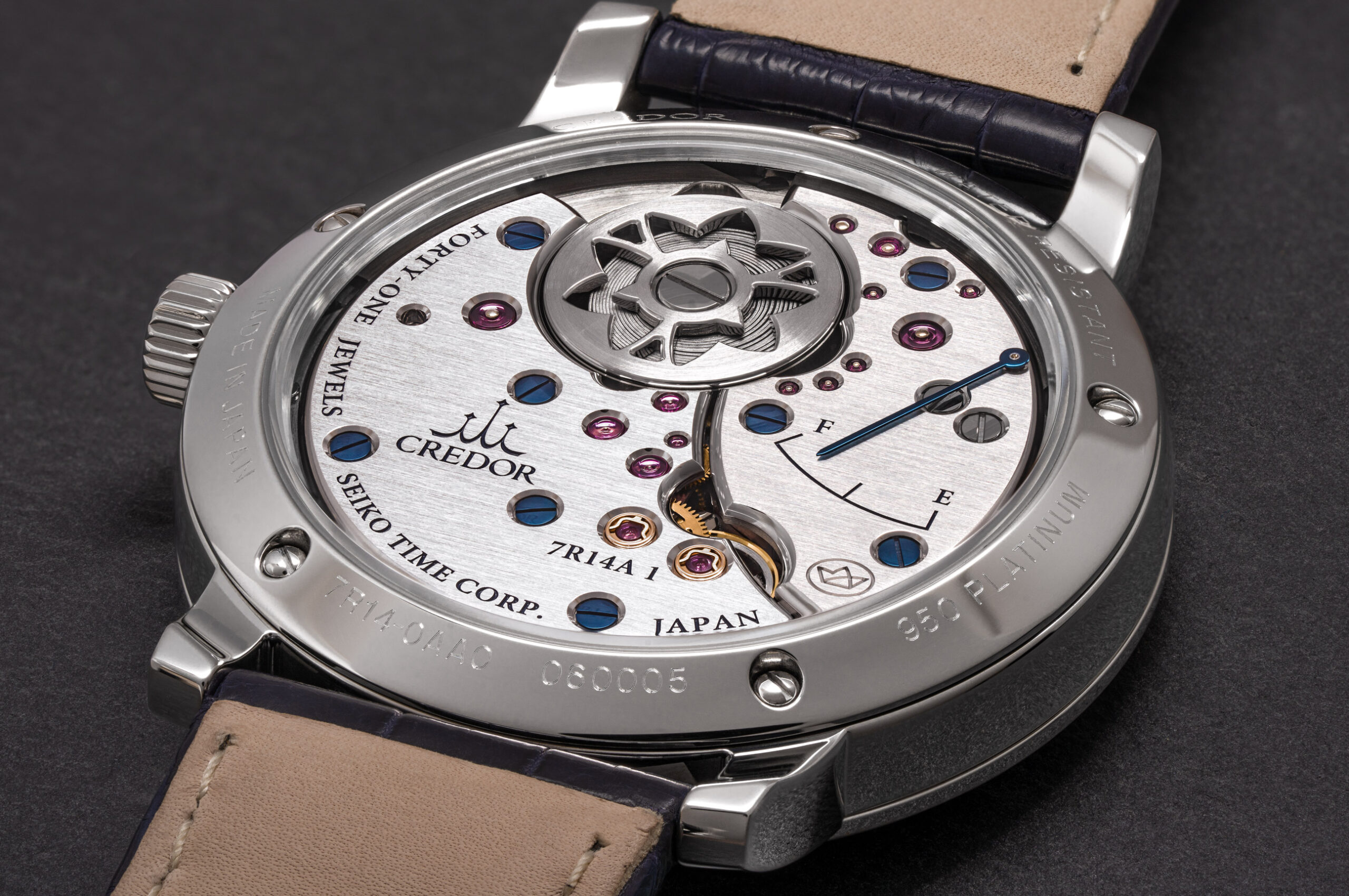
Spring Drive calibre 7R14A powering the Credor Eichi II
Spring Drive technology is one of the most innovative evolutions of the mechanical movement in decades. With their expertise in battery-powered watches and their vast commitment to precise, fine watchmaking it should come as no surprise that the Seiko Corporation were the ones to evolve the mechanical watch in this way. It’s true that the purest out there have been known to look down on quartz watches, and I’m sure there are some out there who may feel the same about Spring Drive. But the reality is that it's a hugely exciting advancement of the wristwatch. The charm factor of a mechanical watch remains with Spring Drive, Grand Seiko has simply improved and enhanced it for the modern era. As for Yoshikazu Akahane and his initial aim with Spring Drive, I think it’s fair to say this one can be chalked up as mission accomplished.
Not all watches with Seiko on the dial are created equally, and ones graced with ‘Grand’ in front of that deserve a second glance. Whether you’re popping into James Porter & Son, attending your local RedBar, or doing research online, do yourselves a favour and pay Grand Seiko some attention, chances are you certainly won’t be disappointed.
 Basket
Basket

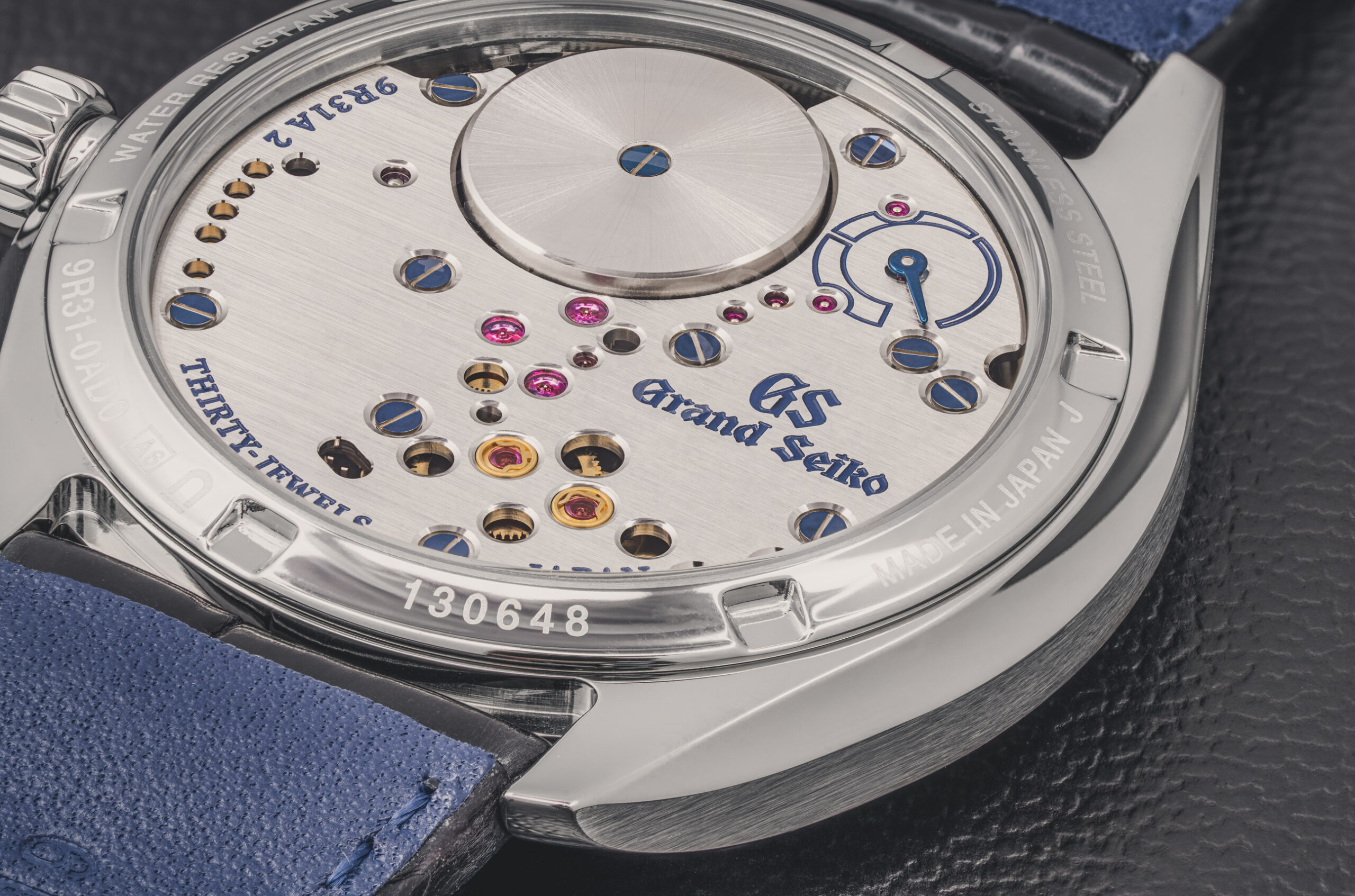
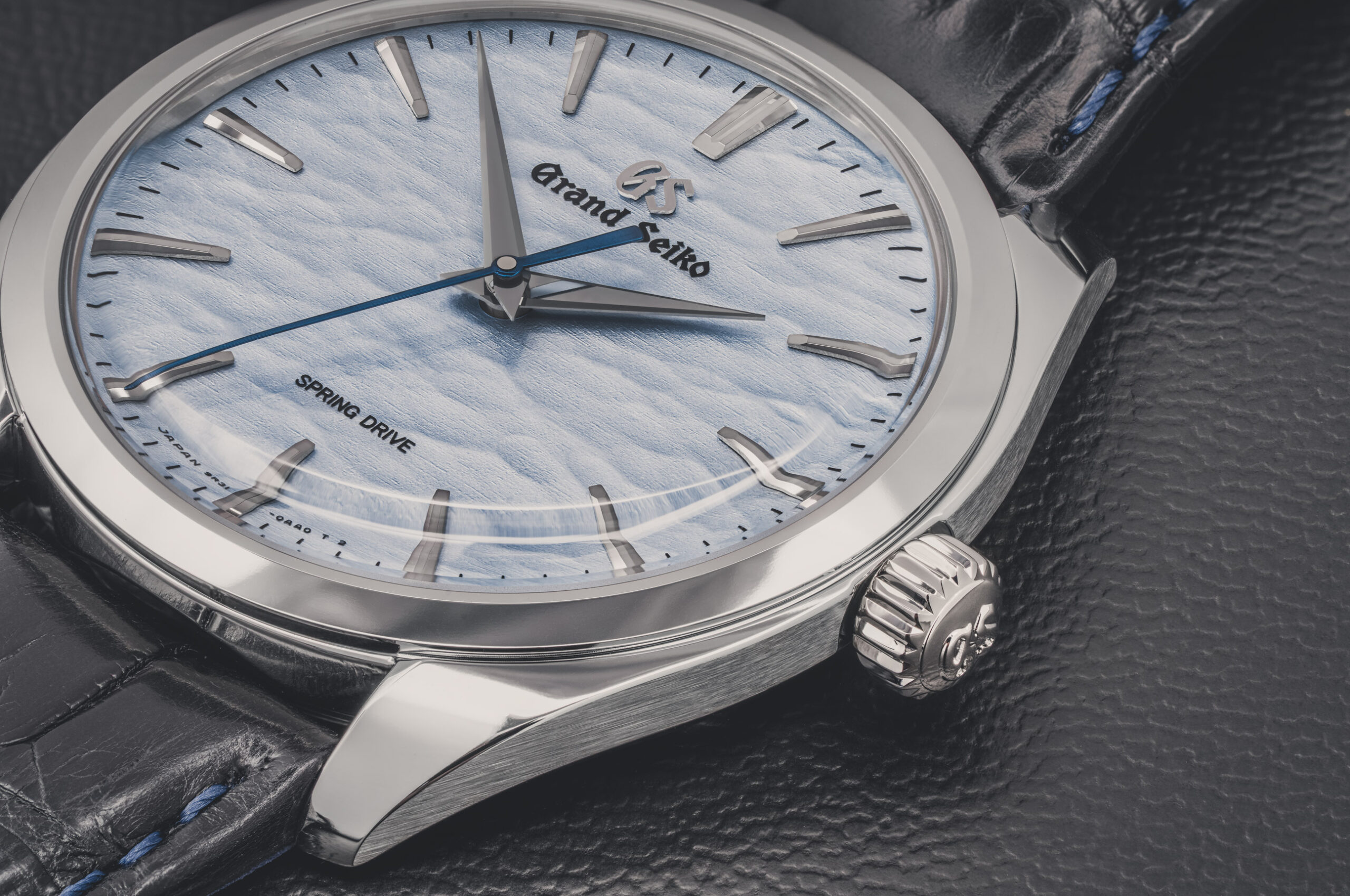


 Back to top
Back to top 0141 221 5855
0141 221 5855 Send us an email
Send us an email






 Secure payment methods
Secure payment methods


